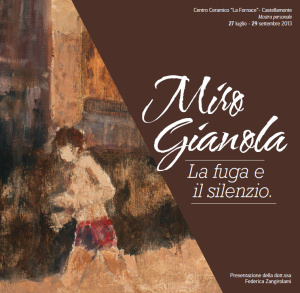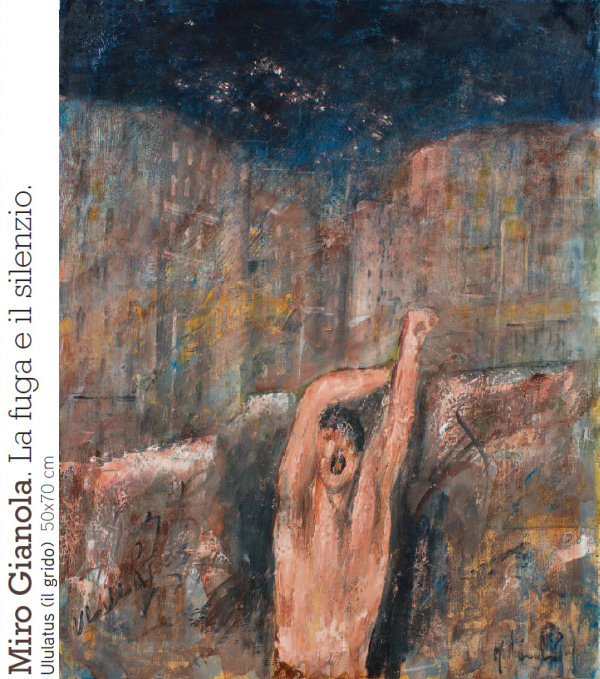“La fuga e il silenzio” (“The escape and the silence”), a solo exhibition of Miro Gianola, will be inaugurated in exactly one month. The exhibition catalog will offer this brief comment of mine in the margin of one of the proposed works.

It is someway paradoxical the silent scream portrayed by Miro Gianola in “Ululatus”. Søren Kierkegaard discussed about the dual and mysterious nature of anxiety, which
can just as well express itself by muteness as by a scream. (1)
The philosopher was referring to the anxiety of the artist, which he called “the dizziness of freedom” (2) : as we shrink back in front of a cliff, the creative artist feels a similar sense of dizziness before the endless possibilities opening in front of him. He is stuck. The spirit yearns to infinity, but the hand has a limited surface to paint on, few colors and a life destined to end. Even the writers know it, calling it “writer’s block”. But vertigo does not mean paralysis. Knowing the anxiety does not mean shrinking back before the opportunity to get involved. Before the ravine, Miro makes the leap of faith. Confidence in the creative act, and in the ability to portray palsy and offer it – unresolved – to the observer. In an era of preachers who provide absolute truths, we can be grateful for the paradoxical provocations offered by Miro with delicacy and great expressive power. (3)

Miro Gianola, “The escape and the silence”.
Ululatus (the scream) 19.7 × 27.6 inches
1. Søren Kierkegaard, The Concept of Dread, University Press, Princeton 1957, p. 106. Thanks to Maria Popova.
3. Mariano Tomatis in Federica Zangirolami (ed.), Miro Gianola – La fuga e il silenzio, official catalogue, Focus Grafica, Castellamonte (Italy) 2013, page 14.
BY-NC-SA 4.0 • Attribution-NonCommercial-ShareAlike 4.0 International